Hadrian’s Arch
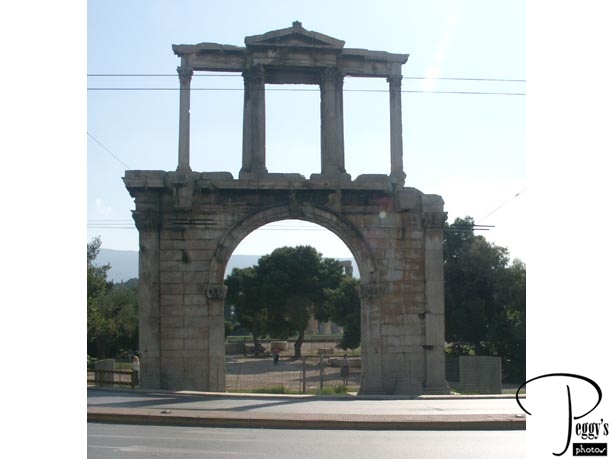
This morning, I started my day of Athens sightseeing by taking a short walk from my hotel to Hadrian’s Arch. It was built in 131 A.D. to honor the Roman Emperor Hadrian, ruler of Athens, on his finishing of the nearby Temple of Olympian Zeus. It marked the boundry between the ancient city of Athens (the area to the west) from the new Athens of Hadrian (to the east). On the west side of the arch, he had inscribed, “This is Athens, the ancient city of Theseus.” On the east side of the arch, he had inscribed “This is the city of Hadrian, not of Theseus.”

Hadrian’s Arch
Temple of Olympian Zeus
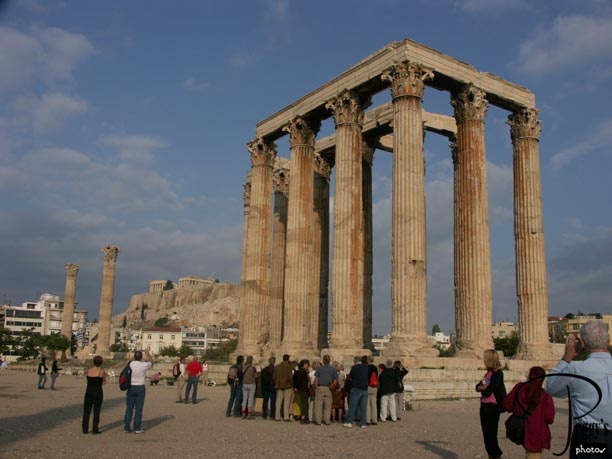
The Temple of Olympian Zeus and, to the west, the Parthenon. This temple was started in the 6th century BC by the hated tyrant Pisistratos, but when he died, the citizens of Athens refused to finish the temple as they didn’t want to honor Pisistratos by doing so. However, Hadrian commissioned the temple to be finished, 650 years after it was started. The Temple of Olympian Zeus was the largest temple in Greece, even larger than the Parthenon (Parthenon: 230 feet long, 100 feet wide; Temple of Olympian Zeus: 315 feet long, 130 feet wide). Hadrian put a gold and ivory inlaid statue of Zeus inside the temple, and next to it, a giant statue of himself.

Temple of Olympian Zeus
Temple of Olympian Zeus
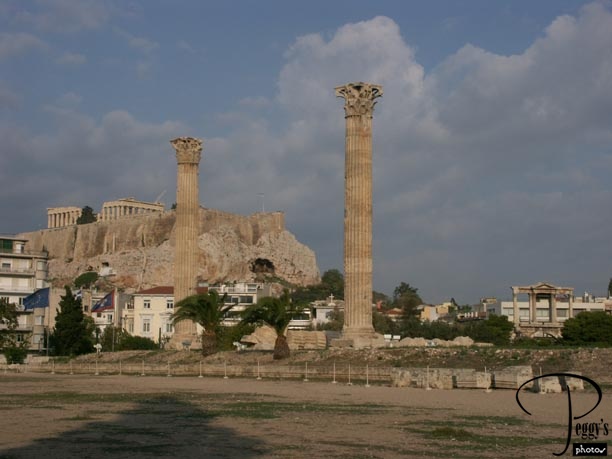
View of two of the separated columns with the Parthenon in the background and Hadrian’s Arch on the right.

Temple of Olympian Zeus
Temple of Olympian Zeus
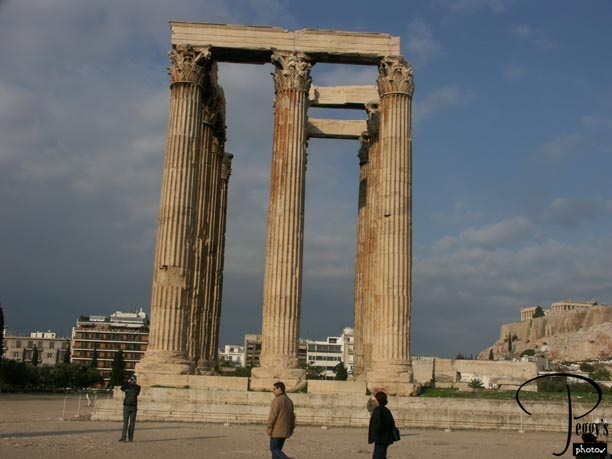
Another view of the temple.

Temple of Olympian Zeus
Temple of Olympian Zeus
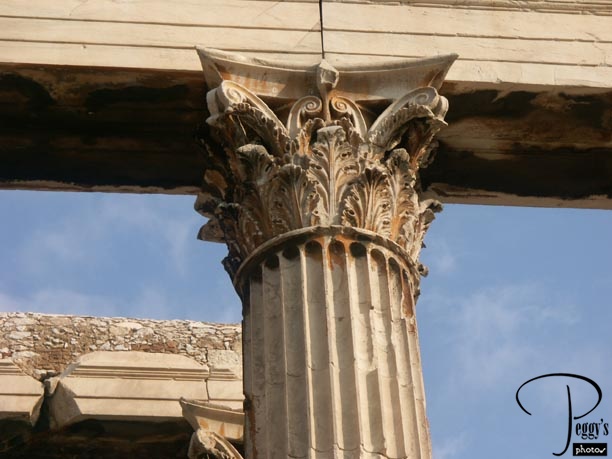
The original columns were Doric (plain) but they were changed to fancy Corinthian columns at a later date.

Temple of Olympian Zeus
Parthenon
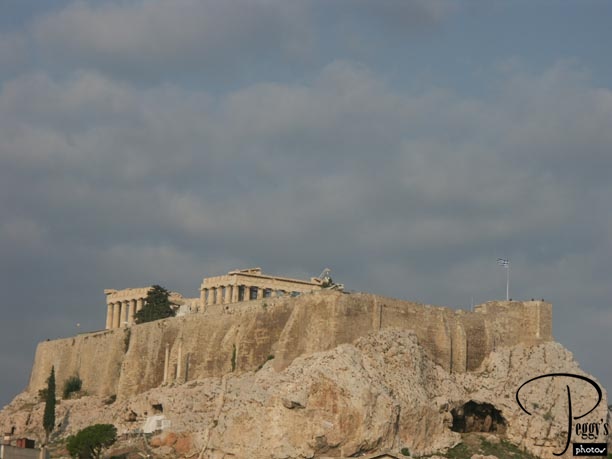
Closer–up view of the Parthenon from the Temple of Olympian Zeus.

Parthenon
Roman Baths

I walked back to the main street and passed the excavation of the Roman Baths.

Roman Baths
National Gardens

I next walked through the National Gardens. The day had started out chilly and became colder and overcast. I was going to take a tour of the gardens, but they appeared to be rather empty of people and thought better of it. The gardens are a 40–acre oasis in the middle of Athens.

National Gardens
National Gardens
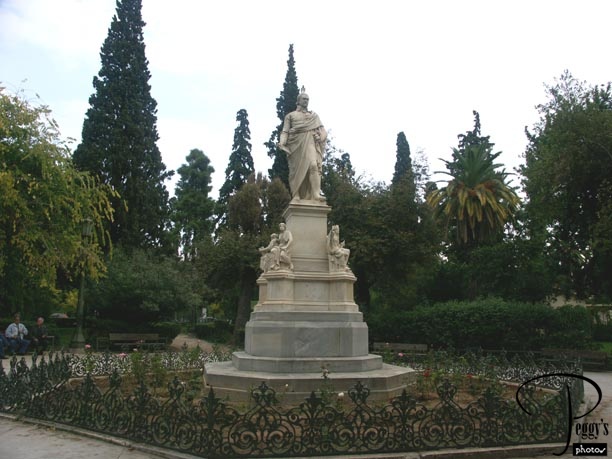
One of the statues in the gardens.

National Gardens
National Gardens
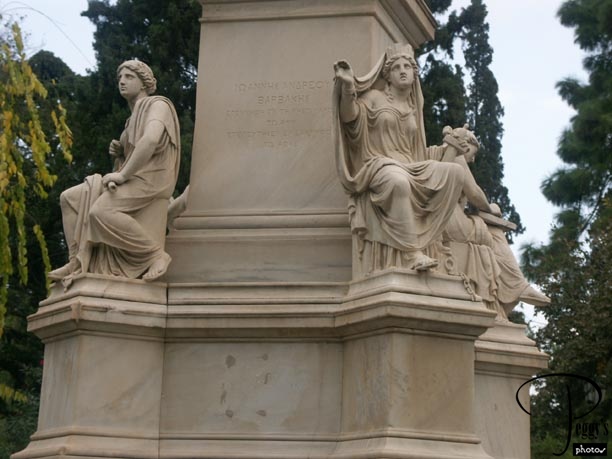
Close–up of part of the statue.

National Gardens
Panathenaic Stadium
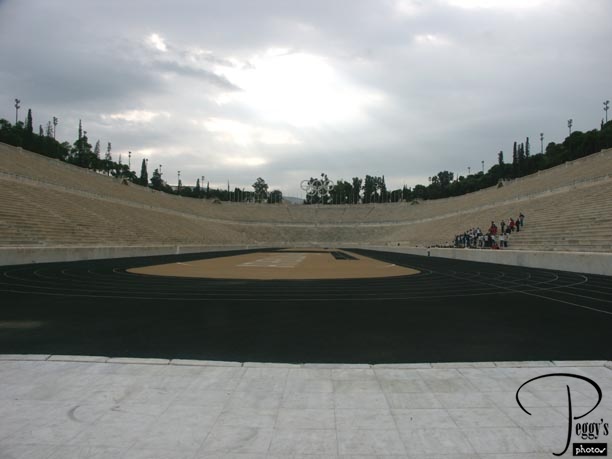
South of the National Gardens is the Panathenaic Stadium, the first modern Olympic stadium built. It was built in 1895, all of marble, as a replica of the Herodes Atticus Stadium, which was on this same site. The Herodes Atticus Stadium hosted the Panathenaic Games in 144 A.D. The Panathenaic Stadium hosted the first modern Olympic Games in 1896 and was renovated to host some of the events of the Olympic Games of 2004.

Panathenaic Stadium
Panathenaic Stadium
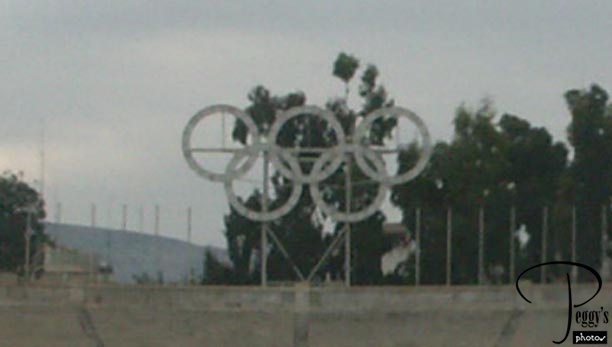
Close–up of the Olympic Rings at the back of the stadium.

Panathenaic Stadium
Panathenaic Stadium
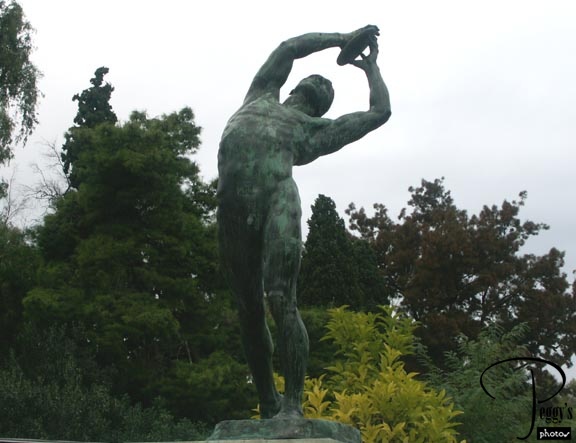
Statue of Olympian athlete near the stadium.

Panathenaic Stadium
Presidential Palace
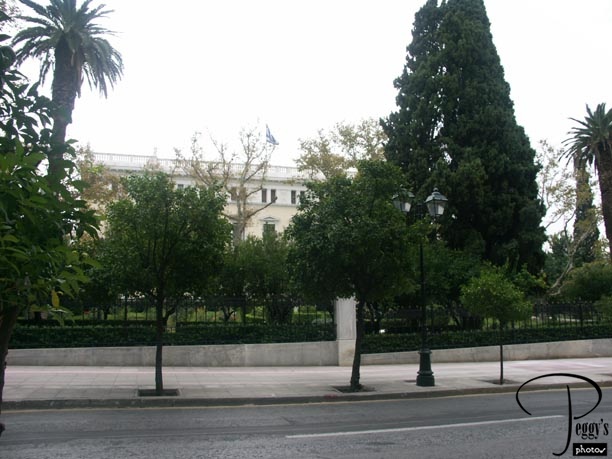
North of the stadium is a well–guarded street leading to the Presidential Palace (don’t worry about being mugged on this street––it won’t happen as it is filled with soldiers and police officers). View of the Presidential Palace––not much of it can be seen through the trees.

Presidential Palace
Evzone Guards
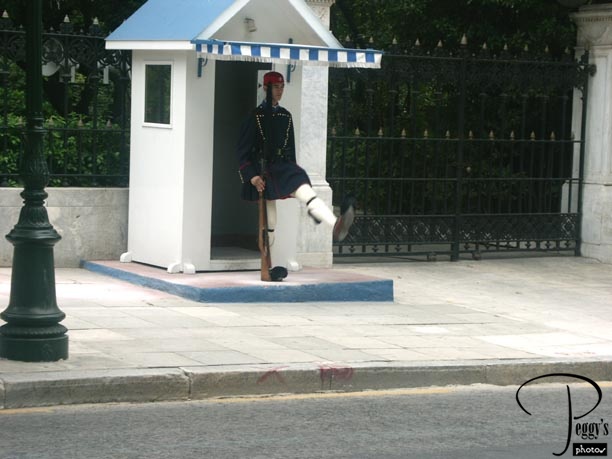
Evzone Guards are also stationed in front of the palace. They have different uniforms on from the outfits that they wore two days ago.

Evzone Guards
Evzone Guards
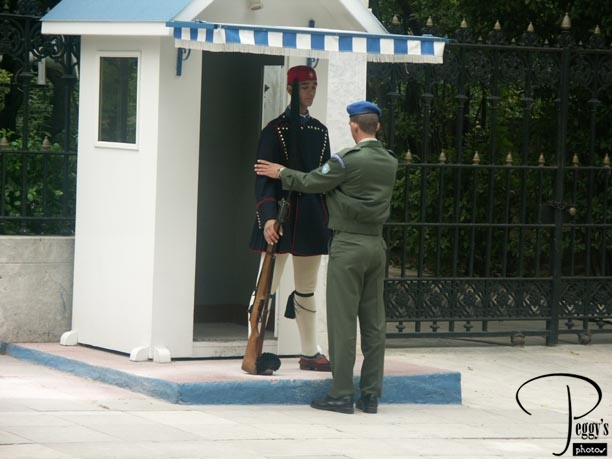
A guard making sure that all was perfect on the Evzone Guard’s uniform. After doing this, the guard crossed the street and asked me if the job he had just done was a good one. He knew that I was waiting to take a photo of the Evzone Guard and I realized, with great surprise, that the reason for straightening the Evzone Guard’s uniform was actually to make sure that I would be taking a perfect photo of him.

Evzone Guards
Evzone Guards
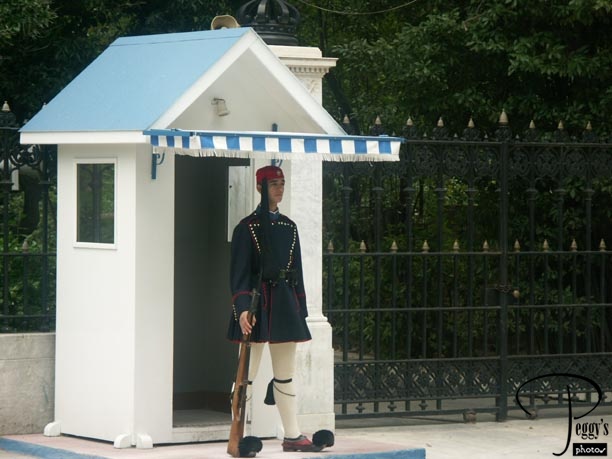
So, I got to take a perfect photo of the Evzone Guard.

Evzone Guards
Evzone Guards
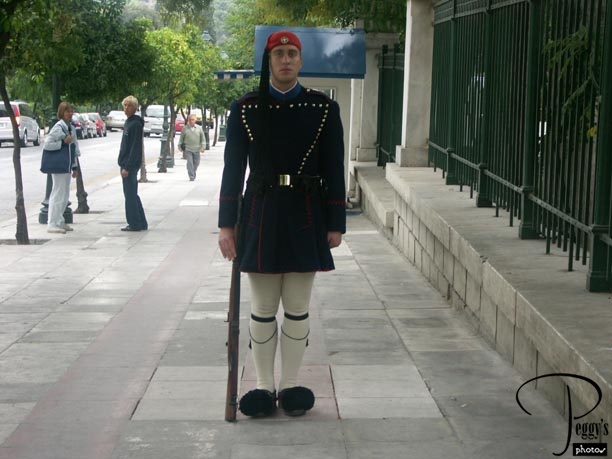
And also another photo of another Evzone Guard on the other side of the street.

Evzone Guards
Byzantine Museum
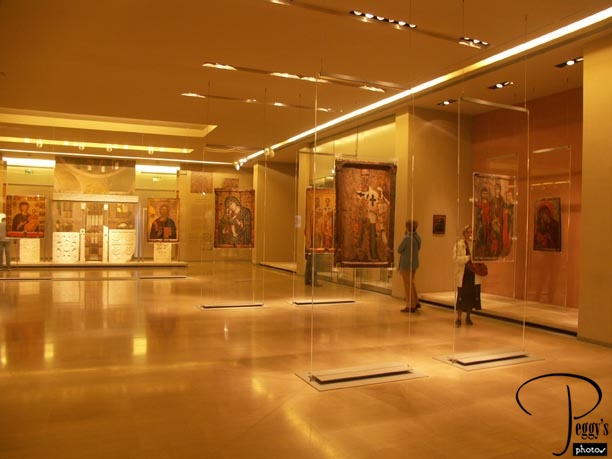
The Byzantine Museum is on Vasilissis Sofias, the major cross street from the Presidential Palace. On Vasilissis Sofias are also the Museum of Cycladic Art, the Benaki Museum, the War Museum, and numerous foreign embassies. It is a very nice area of Athens. I was only planning on visiting the Byzantine Museum this morning. This was an excellent museum: Its collection of sculptures, icons, wall paintings, manuscripts, mosaics, and clothing was very interesting and you were helped in understanding what you were viewing, including the time frame of the Byzantine Empire in Greek history, by numerous posters hanging throughout the museum. The Byzantine Empire began about 330 A.D. when the Roman Emperor Constantine made Constantinople the Roman capital. It ended in 1453 when the Ottoman Turks conquered Constantinople. The word “Byzantine” is derived from the original Greek name for Constantinople: “Byzantium.” This photo is of the room where many icon paintings are hung.

Byzantine Museum
Byzantine Museum
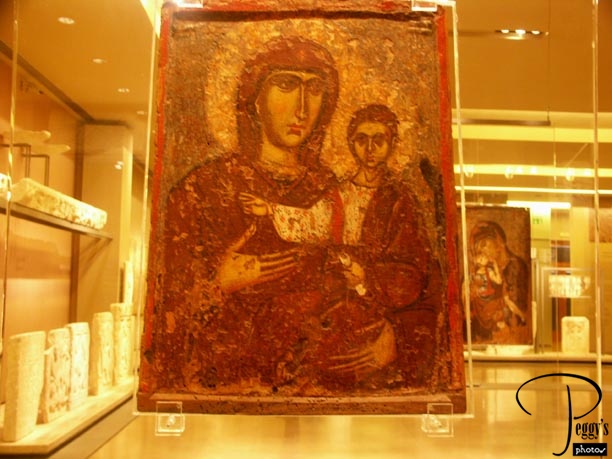
Icon painting: the Virgin Hodegetria, 13th century A.D.

Byzantine Museum
Byzantine Museum
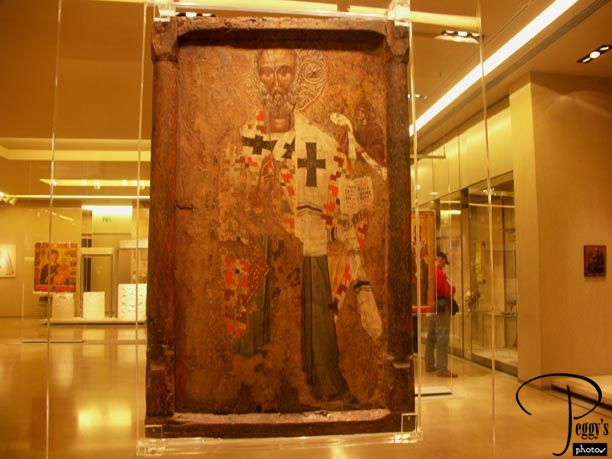
Icon painting: St. Nicholas, 15th century A.D.

Byzantine Museum
Byzantine Museum
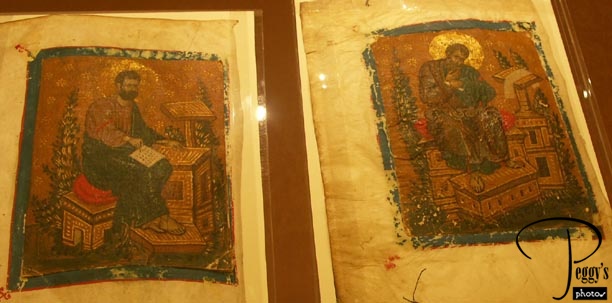
Parchment leaf of a manuscript Book of Gospels with an illumination of St. John, late 13th–early 14th century A.D.

Byzantine Museum
Byzantine Museum
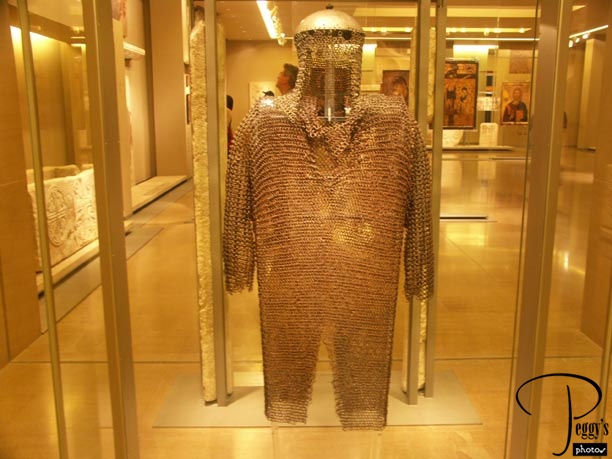
Iron chain mail for a knight and a bronze helmet, 13–15th century A.D.

Byzantine Museum
Byzantine Museum
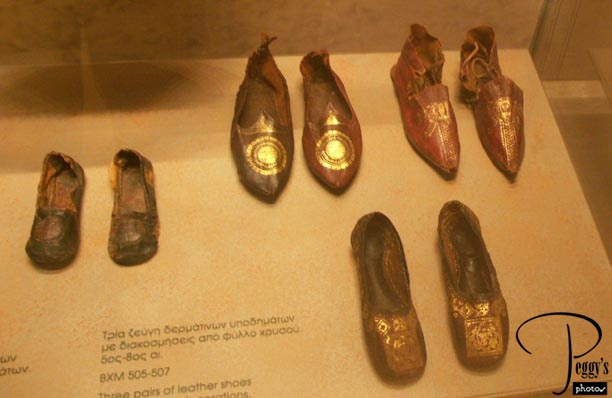
Leather shoes with gold–leaf decorations, 5th–8th centuries A.D.

Byzantine Museum
Byzantine Museum
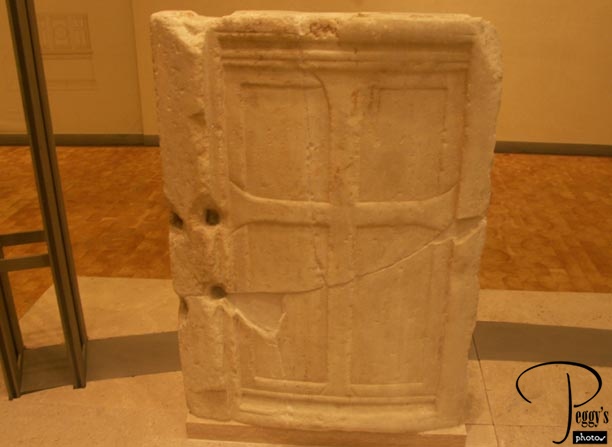
Marble closure slab with relief cross from the pulpit of the Christian Parthenon, 5th–6th centuries A.D. (The pagan Greek temples, including the Parthenon, were converted to Christian churches during the years of the Byzantine Empire).

Byzantine Museum
War Museum
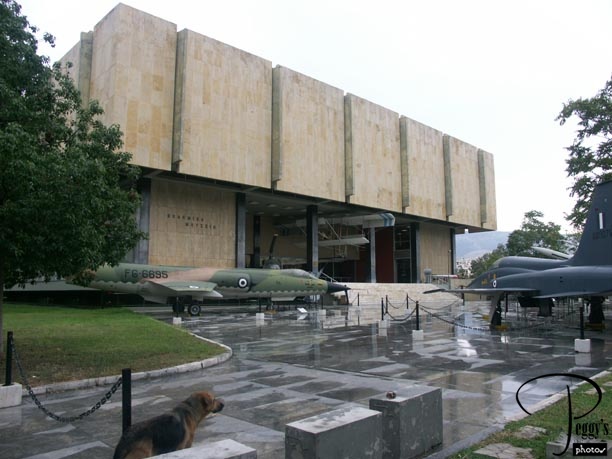
The War Museum is right next to the Byzantine Museum. I didn’t visit it today or later on (due to being too tired), but it is supposed to be a very interesting museum with exhibits dating back to ancient Mycenaean times and extending to the German occupation of Greece in 1941. I had planned this day to go up to the top of Likavitos Hill, which was close by. However, it had started to rain and I decided instead to go to another museum on my list of the places that I most wanted to see in Athens: the National Archeological Museum, which was in a completely different part of Athens. My map of Athens showed a subway station close by and I walked, actually being led there by the dog in the photo who had decided to adopt me, to the subway station (by this time, I had learned not to fear the Athens’ stray dogs).

War Museum
The Athens Metro
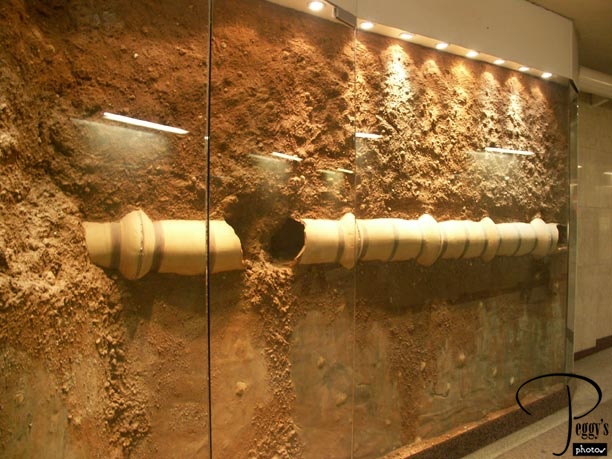
This was my first time on the Athens Metro. I took the blue line from the Evangelismos station, then transferred to the green line at the Monastiraki station and got off at the Victoria station. Cost of the whole trip: 70 cents (Euro cents, about 80 cents U.S.). The Athens subway opened in 2000––it is a first–class subway: I give it a 9.5. There are mini–museums in some of the stations, mainly of the ancient artifacts that were found when the excavations were done for the subway. This photo shows an actual dirt wall with an ancient pipe still in it.

The Athens Metro
The Athens Metro
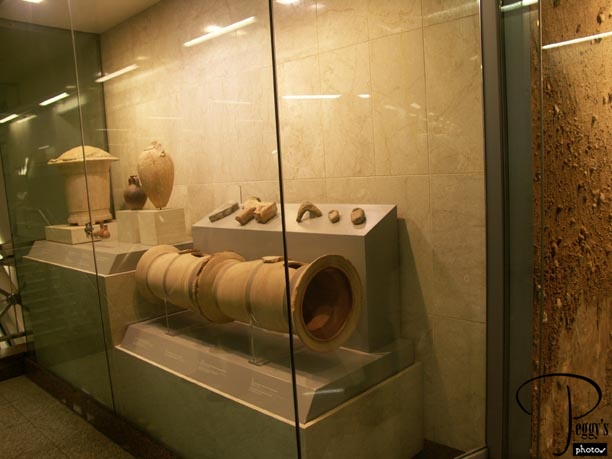
Display case at the Evangelismos station, showing a pipe, vases, etc., found during the excavation.

The Athens Metro
National Archeological Museum
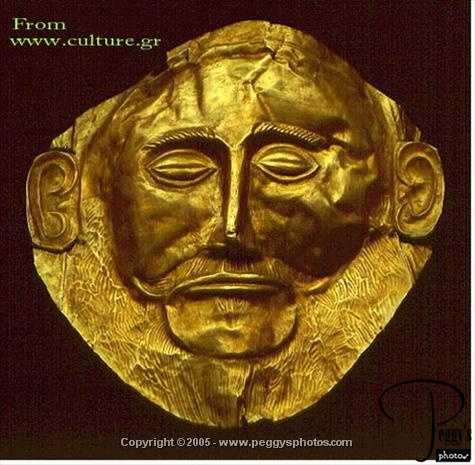
It was about a 10–minute walk from the Victoria metro station to the museum. The size of the museum and its very extensive collection of artifacts representing all the cultures that flourished in Greece from prehistoric times through ancient times was overwhelming. You could easily spend several fascinating days here. I spent several fascinating hours here until I became museumed–out for the day. No photos were allowed in the museum, although I did see some people taking a photo here and there (I didn’t). However, to show you something of its collection, I took some photos off the Internet site that covers this museum: www.culture.gr. You may want to visit this site to see more of this museum’s collection and also some of the collections of other Greek museums. The artifacts displayed in this and other Greek museums have been taken from archeological sites so that they can be preserved, something hard to do if they were left where they were found. The museum’s collection is from prehistoric times, which go back to 5000–3500 BC (there are many items in this museum dating back this far). This photo is of a gold funerary mask, known as “Schliemann’s Agamemnon,” as it was originally believed to be the death mask of Agamemnon and was discovered by Schliemann in a grave circle at Mycenae. It dates back to the second half of the 16th century B.C.

National Archeological Museum
National Archeological Museum
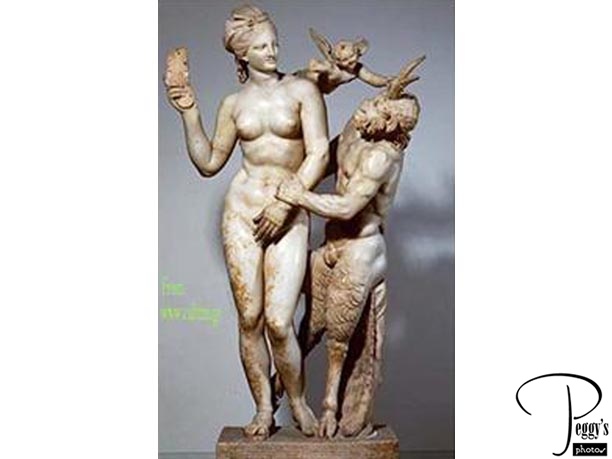
Marble group representing Aphrodite (goddess of love), Pan (shepherd god, son of Hermes, with legs and horns of a goat), and Eros (god of love). It dates back to 100 B.C. and was found on the island of Delos.

National Archeological Museum
National Archeological Museum
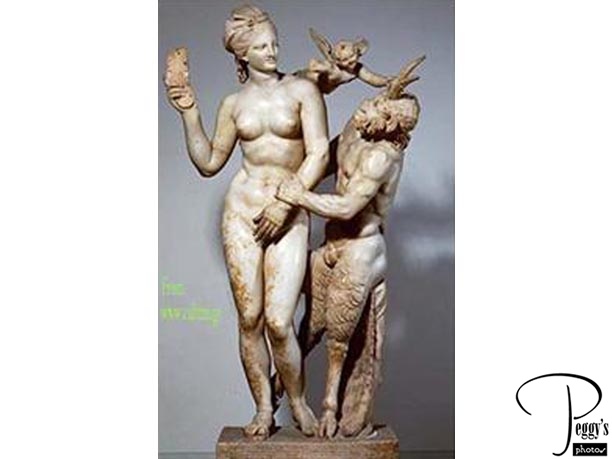
A Panathenaic amphora with Athena Promachos on the front. It dates back to 363/2 B.C. and was found at Eretria.

National Archeological Museum
National Archeological Museum
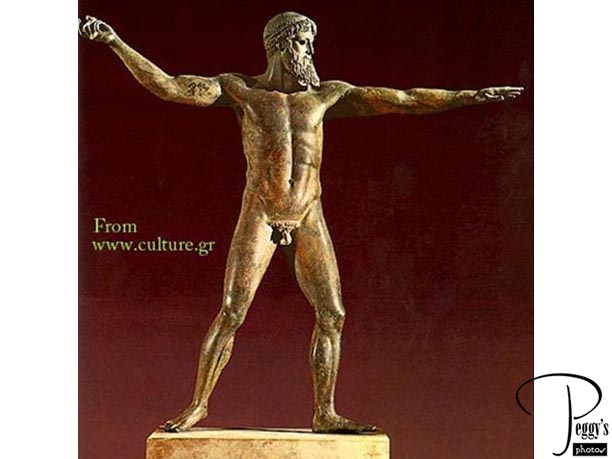
Poseidon (god of the sea). This bronze statue was found (appropriately) in the sea, off Cape Artemision. It dates back to 460 B.C. From the National Archeological Museum, I took the tourist bus back to my hotel. This is a handy bus, which for a fee of 5 euros––ticket good for 24 hours––will take you close to all the tourist spots in Athens. However, depending on where you get on the bus, the route can be very long to where you want to get off. It took about an hour for me to get back to my hotel.

National Archeological Museum
Athens at Night Tour
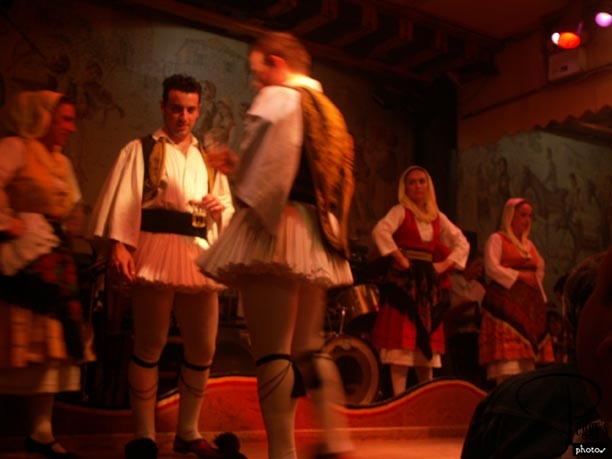
I got back to my hotel and took a needed nap as I was to be picked up at 8:30 p.m. for an Athens at Night Tour. Many of the Athens tour operators offer a night tour of Athens, but I chose to go on the one by G.O. Tours as it made a stop first in Mikrolimano, a very pretty harbor area near Piraeus. We were a very small group and took up only part of a long table in a seaside restaurant. In fact, we were the only people in the whole restaurant which seated about 300 people––probably because it was an open–air restaurant and it was very cold that night. We were served appetizers and shared some bottles of ouzo––the Greek liqueur that tastes like licorice. I am testimony that a small amount of ouzo will put you into a very good mood for a whole evening. I sat across from a couple from Brussels, who I greatly enjoyed talking to as I had visited their city three times in the past 3 1/2 years. From Mikrolimano, we traveled back to Athens and joined a huge crowd at a tourist taverna for dinner (great appetizers, main meal, ice cream for dessert) and a show. I have put four movie clips on this site of the show: Go to Movies, Western Europe, Greece, “Athens at Night: Never on Sunday (Singers)”; “Athens at Night: Greek Folk Dancers”; “Athens at Night: Never on Sunday (Bouzouki Music)”; and”Athens at Night: Zorba the Greek Dance.” One of my new Belgian friends appears in some of my movie clips, which was unavoidable as I really couldn’t ask him to move out of the way while I was taking the movies. This photo is of the folk dancers. It was a very good show.
